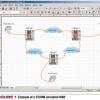|
On the Cost of Quality Technical Editor Brian Lawrence explains four types of costs of quality: prevention, appraisal, internal failure, and external failure. |
Brian Lawrence
June 26, 2002 |
|
 |
Know Thy User Testing, in its broadest sense, means ensuring that your visionaries and programmers are creating a helpful product that people will actually use. As the two authors of this installment of Bug Report illustrate, understanding how those users will operate your application is more than an exercise in empathy; it's a simple key to avoiding some real usability meltdowns. |
Brian Marick
June 26, 2002 |
|
Houston, We Have a Problem Errors start with individuals, and a primary job of testers/QA people is to prevent those errors in the first place. But an equally important part of the job is to find them once they are there, understanding that errors will happen. Jon Hagar asks, "What can we do personally, above and beyond the normal day-to-day jobs that we testers and developers have?" |
||
 |
Network Testing with Shunra's STORM STORM is a software-driven combination of hardware and software that recreates multiple, real-life, WAN links in terms of bandwidth limitations, packet loss, latency, jitter, and more–all in a local area network (LAN) lab. By providing a test bed that brings the WAN into a controlled and repeatable LAN environment, we can test and evaluate the performance and robustness of IP applications or devices before wide-scale deployment, or compare new technologies before field testing. |
Ron Ioszpe
June 26, 2002 |
|
Developing Your Professional Network Do you shudder at the thought of having to learn social etiquette in order to manage your professional network? Networking rituals do have to evolve to fit with new communication mechanisms. But the workings of the human psyche haven't changed, and you still need to learn the skills that are necessary to develop a network that can bolster your career. |
||
|
The Power Loss Trap In order to be effective, Testing must co-exist on a level playing field with Development and Project Management. It cannot be subservient to them. A test lead's authority on a project springs from his or her projected sense of self-confidence in the role, and the Power Loss Trap undermines this authority. Here are a few commonsense ways to protect yourself. |
Matt Leahy
June 26, 2002 |
|
|
Beyond Belief Technical Editor Esther Derby talks about how unconscious beliefs, filters, and maps influence the way we react to situations and the conclusions we reach. |
||
|
Thinking About Thinking Esther Derby recommends The Logic of Failure and The Thinking Manager's Toolbox. Both authors share the same goal: helping you be a better problem solver. They stress the importance of recognizing the situation you're in, choosing an appropriate problem-solving strategy, and having the right thinking tools. |
||
|
I am a Bug, and Refactoring Our editors recommend the books I am a Bug (a children's book written by a software development manager and tester to explain his job to his children) and Refactoring: Improving the Design of Existing Code (by Martin Fowler, with contributions by Kent Beck, John Brant, William Opdyke, and Don Roberts). |
Brian Marick
June 26, 2002 |
|
|
Book Review: Adaptive Software Development Johanna Rothman recommends the book Adaptive Software Development by James Highsmith. She says, "Highsmith shows the reader how to recognize when development practices need to change and how to acquire the skills to adapt. For a fresh approach to software development, be sure to check it out." |
Pages
Upcoming Events
| Jun 02 |
AI Con USA Bridging Minds and Machines |
| Sep 22 |
STARWEST Software Testing Conference in Anaheim & Online |
| Oct 13 |
Agile + DevOps USA The Conference for Agile and DevOps Professionals |







